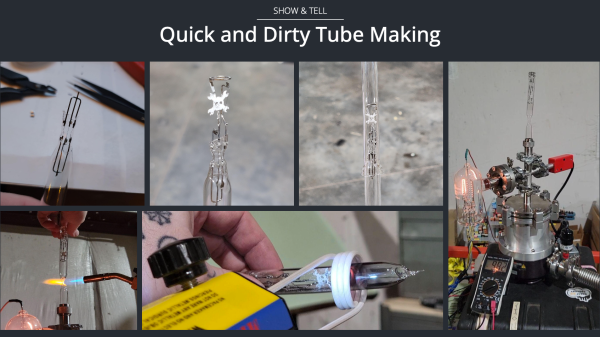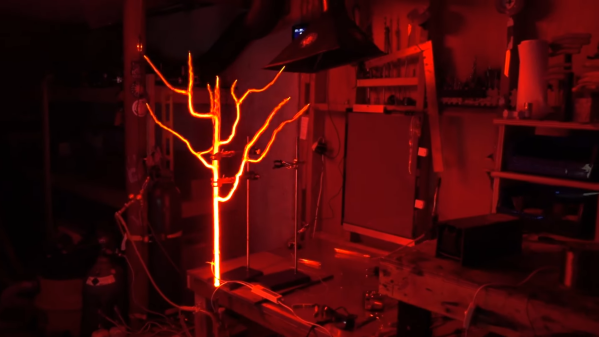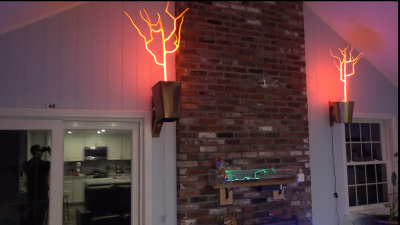[Nick Poole] shared his circuitous journey into the obscure world of homemade vacuum tubes on the Supercon 2022 stage. It began innocently enough when he saw [Usagi Electric]’s single bit computer vacuum tube computer, which uses dozens of vacuum tubes. He got to wondering, could you make vacuum-tube-like devices containing multiple elements? There are some examples, like the 256-bit memory Selectron tube from the 1950’s, but nothing general purpose like a 555 timer or quad NAND gate packages. Unencumbered by a deep understanding of how vacuum tubes work, [Nick] proceeds to fill this void by imagining Integrated Thermionic, a fictitious company that exists in an alternate history where transistors were not invented and the vacuum tube reigns supreme. He also showcases a variety of innovative products that Integrated Thermionics manufactured over the decades, including surface mount tubes.
Continue reading “Supercon 2022: Nick Poole Makes A Jolly Wrencher Tube”















